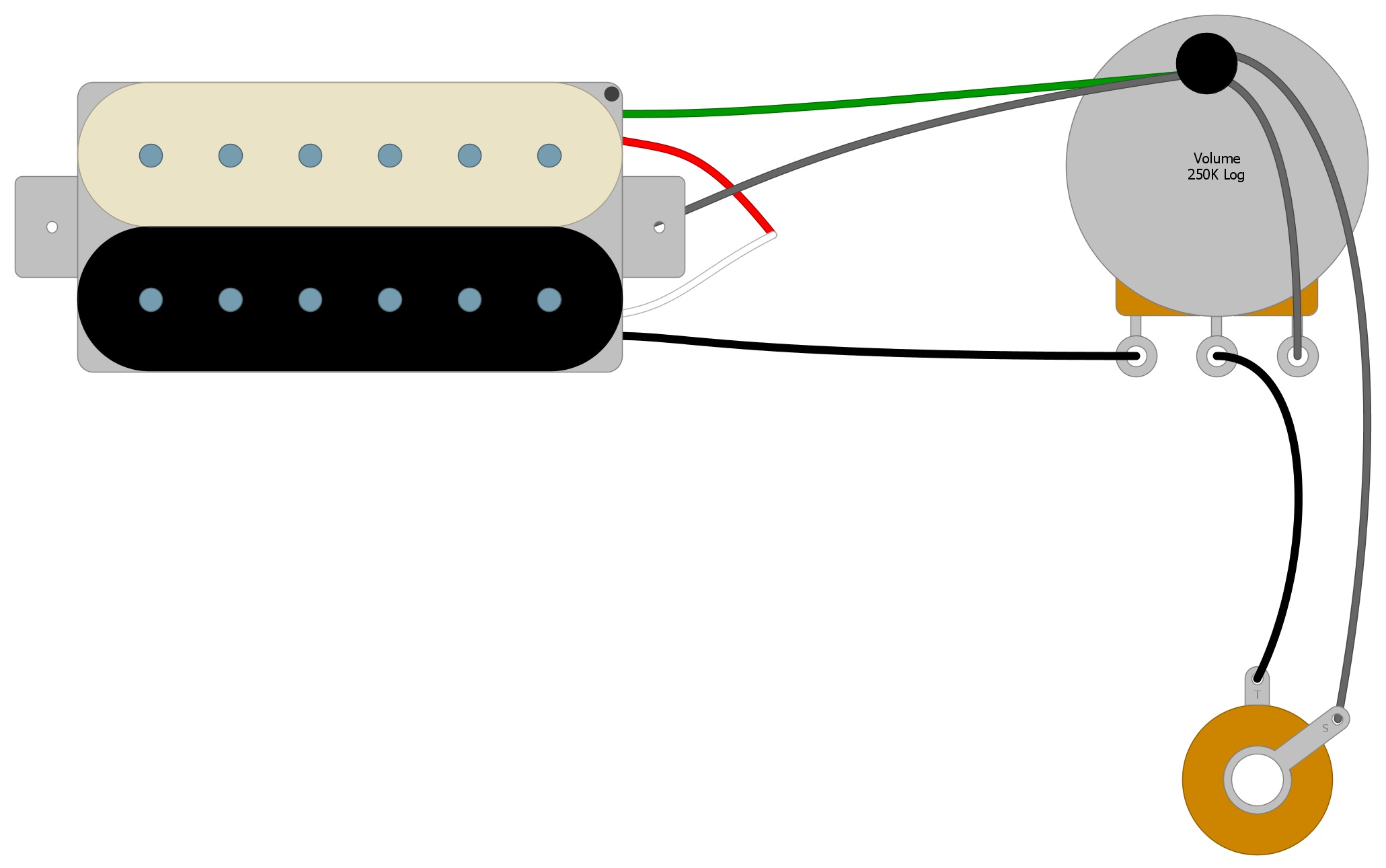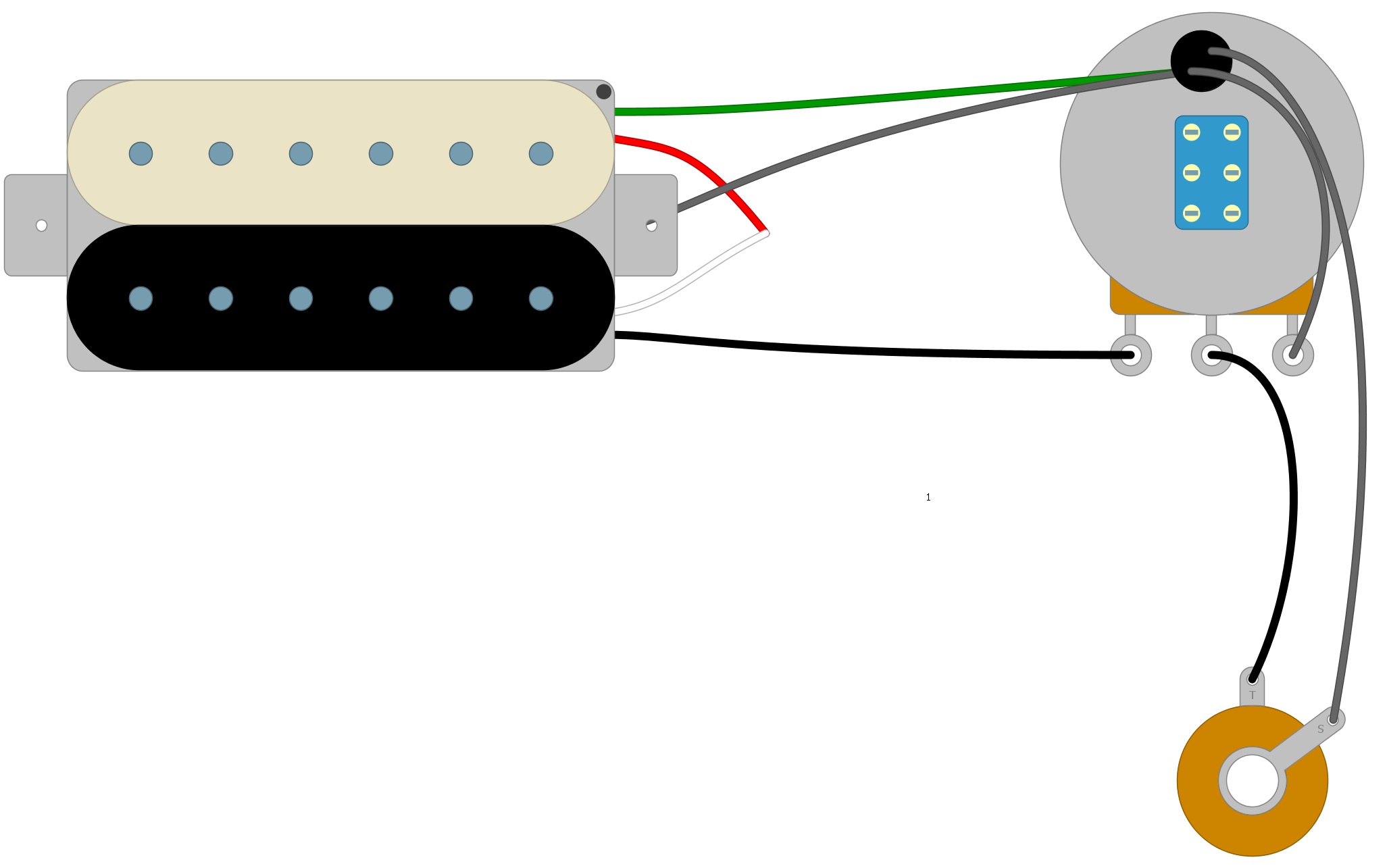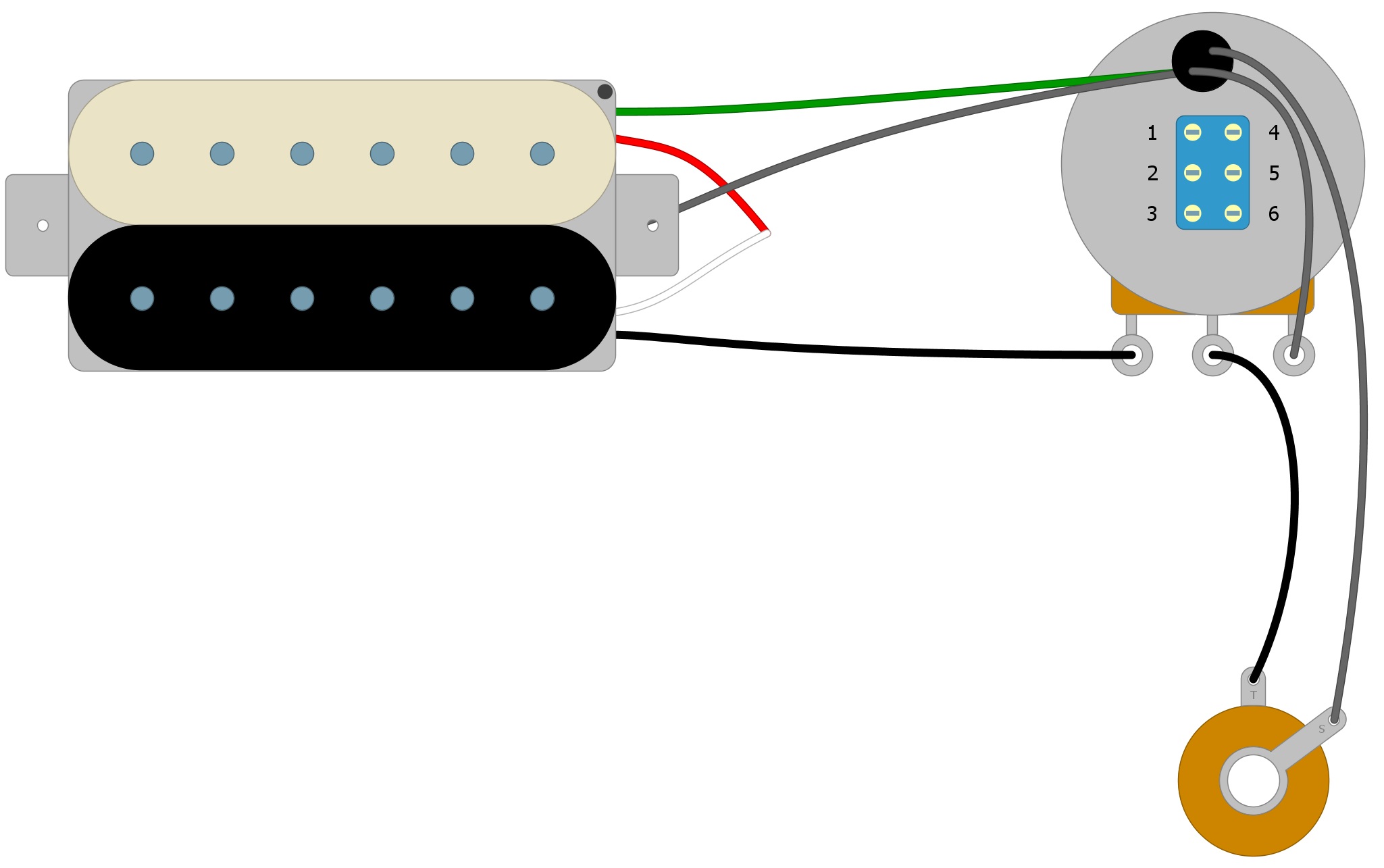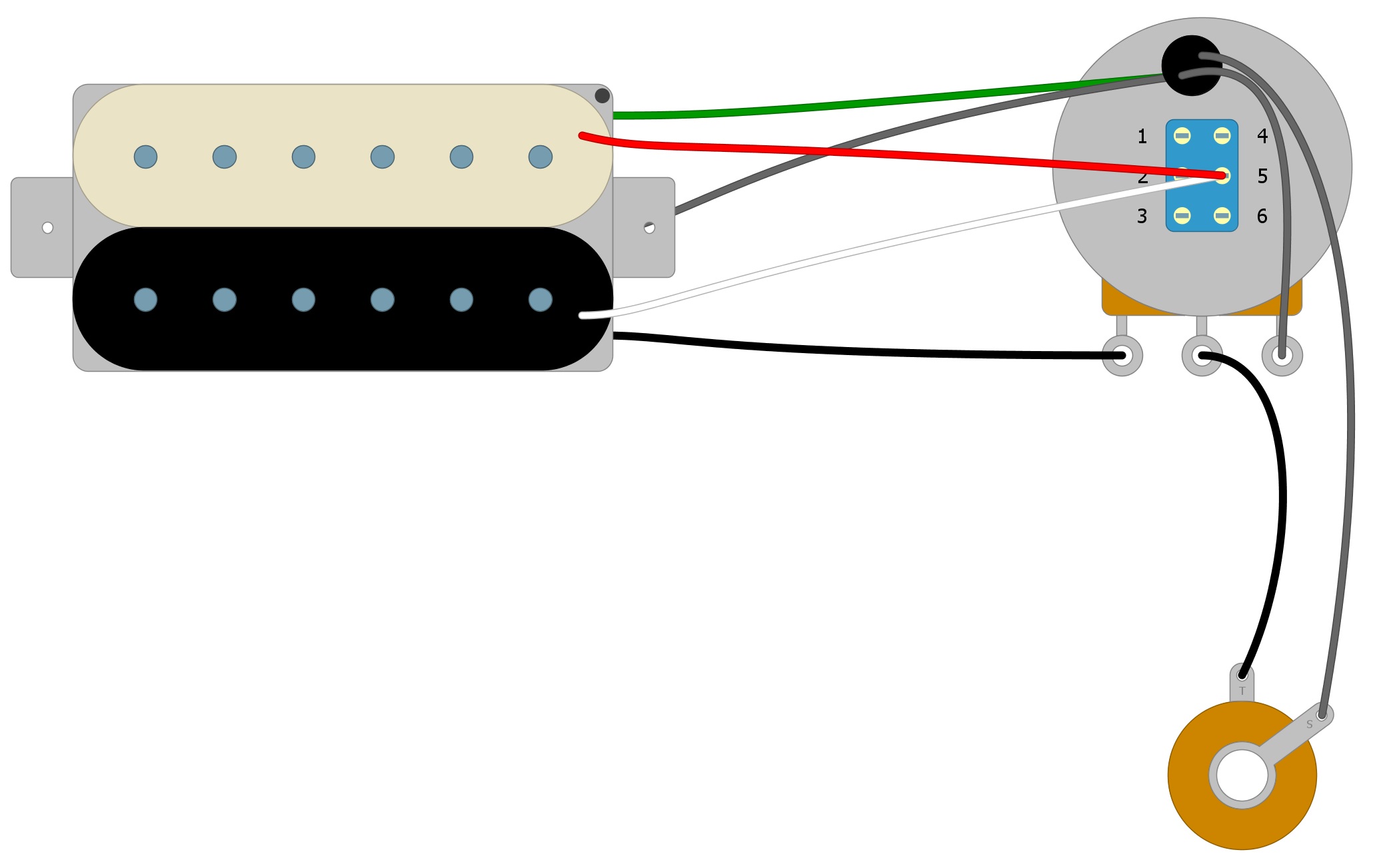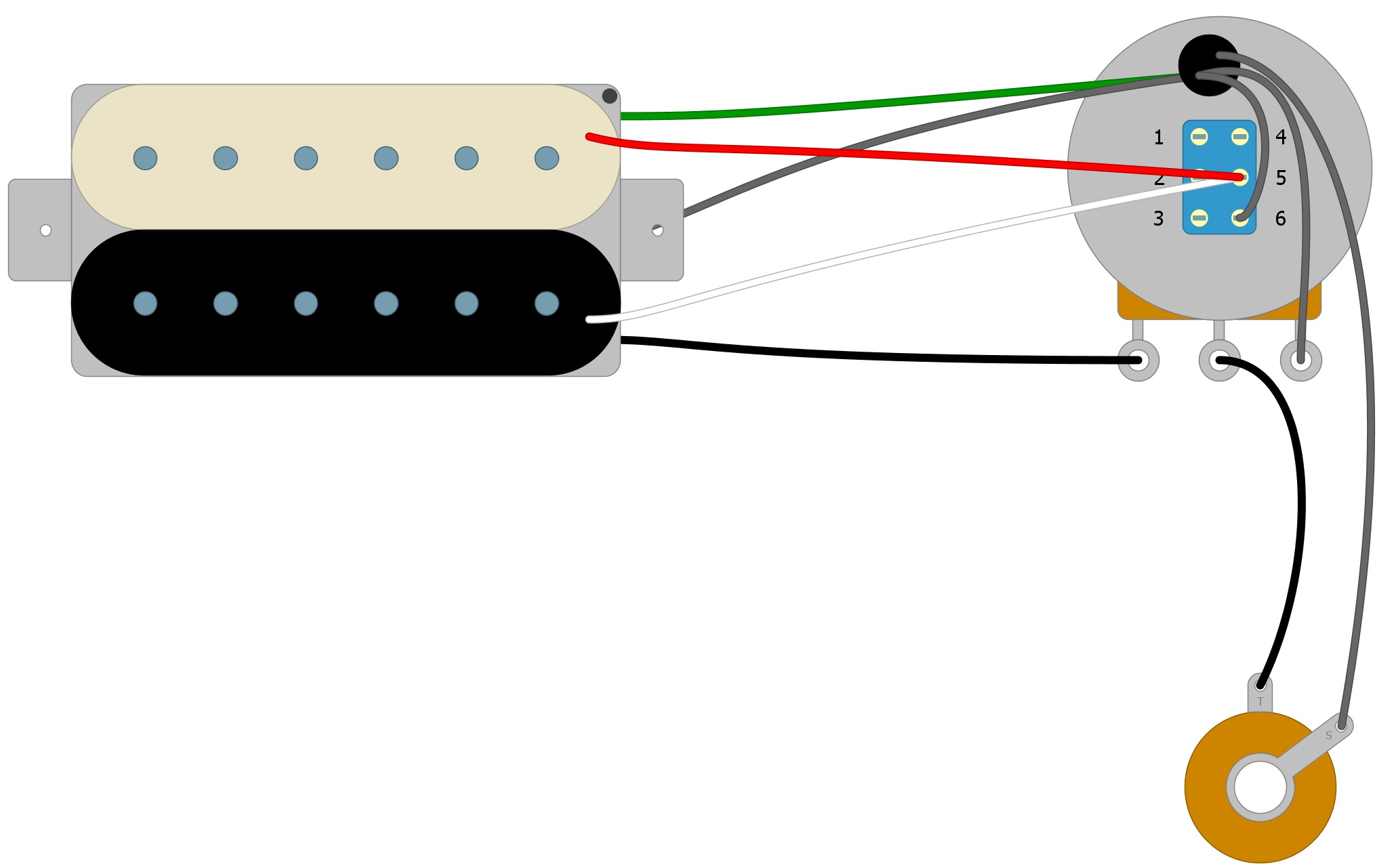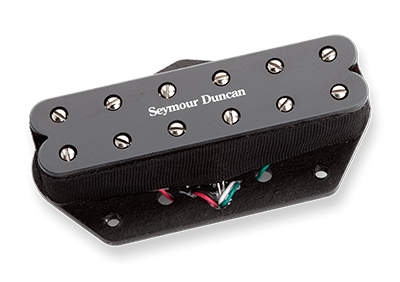
By Ed Malaker
Posted 08/02/2019
Ever considered coil-splitting a Seymour Duncan ST59-1? If so, this article can help you.
Coil-splitting is when you use a switch to shut off one of the coils in your humbucker pickup. When you do this, you get access to single-coil tones. It expands your sonic palette and is a straightforward and reversible mod.
Getting Started
This modification is not exclusive to the ST59-1; it can be accomplished using any humbucker pickup that has four colored wires and one bare wire. We’re talking specifically about the Seymour Duncan ST59-1 in this post because of its wire color consistency. This is not the case with other manufacturers; you’ll find that with them, there is very little consistency in the color of the wires.
The ST59-1
The Seymour Duncan ST59-1 is also known as the Little ’59 Tele. It was designed to be a direct replacement for the standard Telecaster bridge pickup, but it will sound great in many other applications. The Little ’59 is a mini-humbucker, which means that it fits into a single-coil space in your guitar. It uses a ceramic magnet to get a little more output, and it is wax potted to reduce microphonic feedback. It is described as warm and full-sounding, with a medium gain output.
The Switch
For this article, we’re going to use a push-pull pot as our switch, because it allows our mod to be reversible. The downside to the push-pull pot, however, is that the switching mechanism requires more space below the pot and some guitars may not have enough room. You will want to check your guitar before deciding which switch to use. A push-pull pot is a regular Volume or Tone control with a switch built into it. So, pulling out, or pushing in the shaft of the pot toggles the switch.
A toggle switch will be wired the same way; you’ll just have the added challenge of having to decide on where to install it on your guitar. Guitars that have pickguards with a lot of open space underneath are candidates for the toggle switch.
Installing the Pickup
In the ST59 the Green and Red wires go to one of the coils while the White and Black wires go to the other. The Bare wire is a shield wire that always goes to Ground (Fig 1).
Fig 1
In standard practice, the White and Red wires are soldered together. We then use the Black wire as the Hot and the Green as the Ground when installing the pickup into your guitar. The Bare and Green wires are often soldered together (Fig 2).
Fig 2
The next thing we do is install the pickup. For this article, we are going to wire it as if it is the only pickup, and we are only going to be concerned with the Volume control and the Output jack. If you need step-by-step instructions, we have an article here on how to install the ST59-1 (Fig 3).
Fig 3
Splitting The Pickup
First, change the standard Volume pot to a Push-Pull. The Push-Pull pot will be bulkier and have more connection tabs on it, but you should be able to see the three that were on the original. Wire these three tabs the same way as the original pot was wired (Fig 4).
Fig 4
Now we will number the additional tabs on the Push-Pull pot, one through six (Fig 5).
Fig 5
Take the Red and White wires that we soldered together in Fig 2 and solder them to Tab 5 on the Push-Pull pot (Fig 6).
Fig 6
Solder a wire from Tab 6 to the back of the Volume pot. It can be tricky to fit all of the ground wires on the back of a Push-Pull pot. It might be easier to move your ground wires to the Tone pot if you have one (Fig 7).
Fig 7
And that does it… you’re finished. If you find that the coil is splitting when the Volume knob is pushed in instead of pulled out, move the Ground wire from Tab 6 to Tab 4.
Summary
When the Volume knob is pushed in, your guitar signal travels through the first coil, starting at the Black wire, continuing through the second coil, and exiting the Green wire.
When the Volume knob is pulled out, your guitar signal travels through the first coil, starting at the Black wire and exiting through the new ground wire that you installed (coming from the switch).You can split any humbucker that has four wires. The only difference will be the color that goes to each coil.
If you’ve enjoyed this article and found it helpful, please feel free to share this with your friends on Facebook and Twitter. For more articles on guitar electronics, visit humbuckersoup.com.



